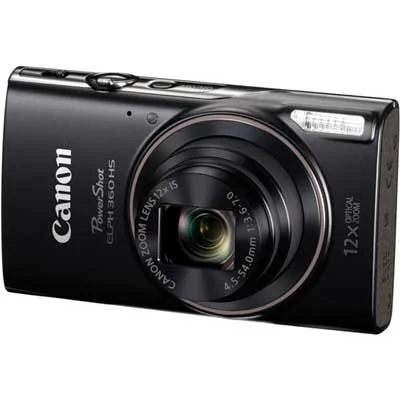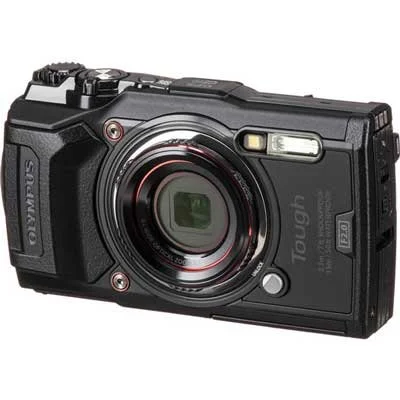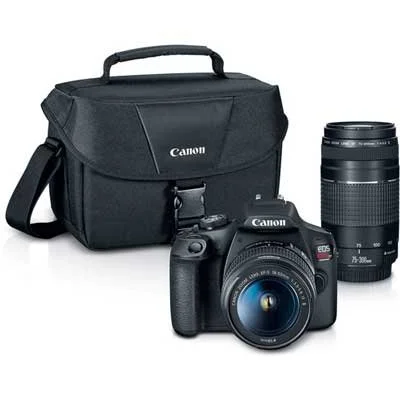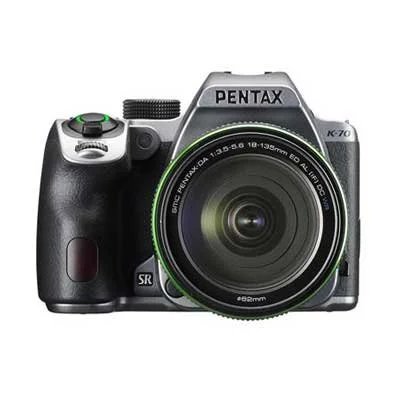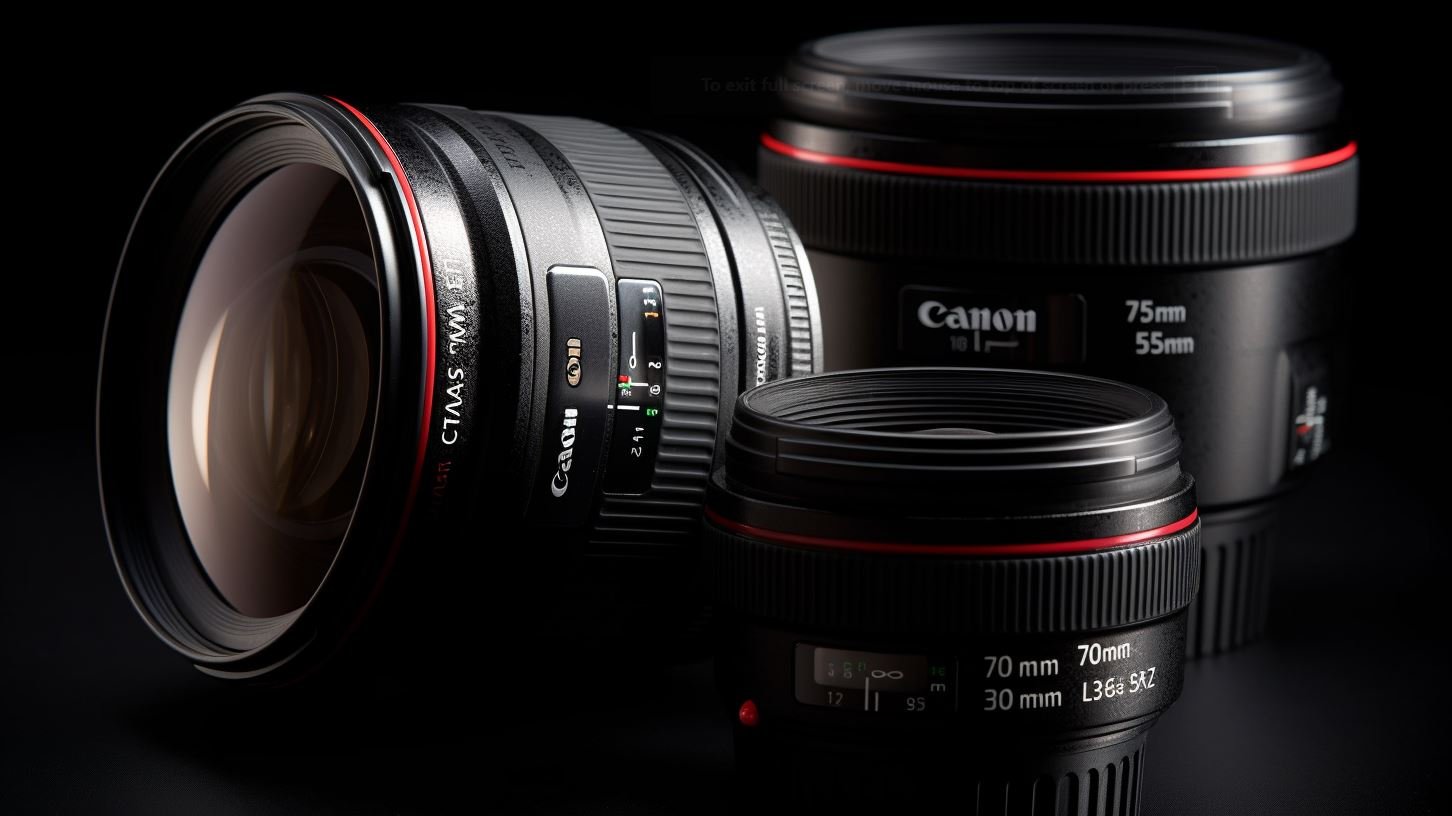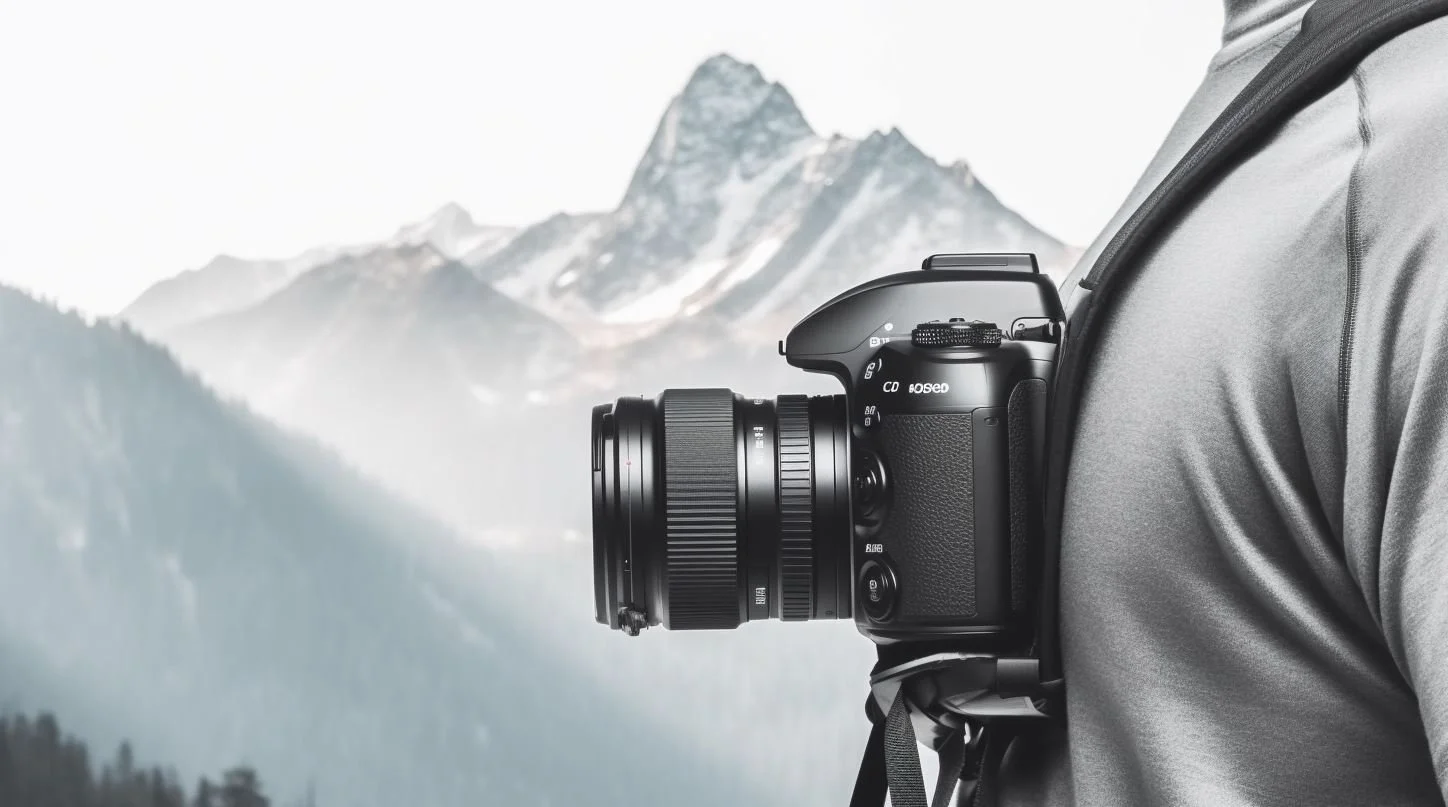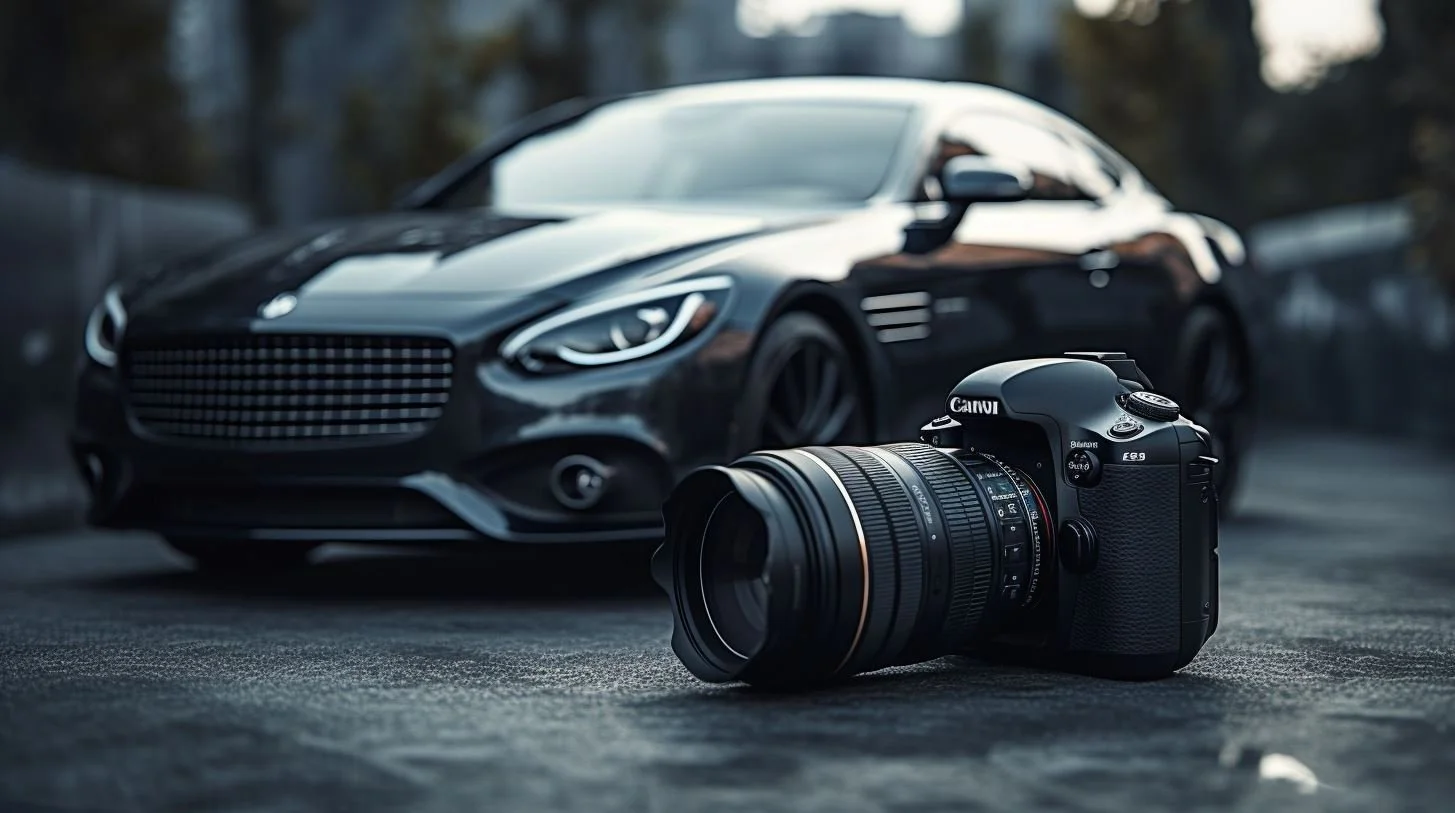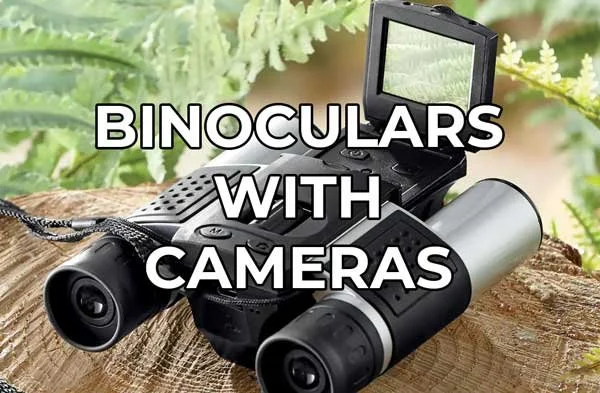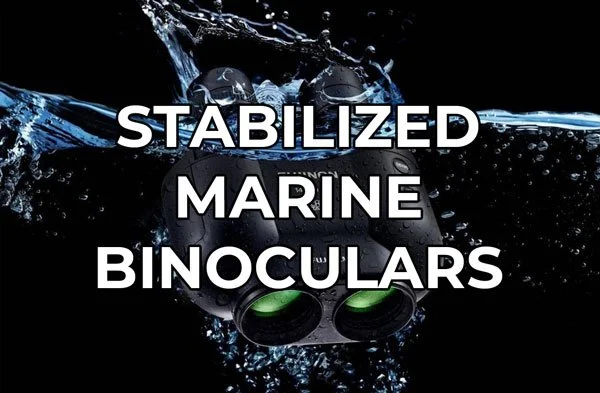Best Budget Camera for Car Photography
Cruising Through Quality: Top Budget Cameras for Capturing Automotive Excellence
In the exhilarating world of car photography, having the right camera can mean the difference between an ordinary shot and a breathtaking masterpiece.
But not all stellar cameras come with a hefty price tag.
There's a common misconception that you need to break the bank to capture the intricate beauty and raw power of automobiles.
In this article, we'll debunk that myth by exploring some top-notch cameras that won't burn a hole in your pocket.
Whether you're a budding photographer or a seasoned professional looking for a budget-friendly backup, we've got you covered.
Read Before Buying:
To determine which camera is best for car photography and your specific needs, please read the list below to determine what features are most important to you.
On a budget, no camera will excel at all of these features, so pick the ones that are most important to you.
Our recommendations will highlight specific features for each model to help make your decision easier.
Here are the features you should consider for a camera intended for car photography:
Resolution: A high megapixel count can be beneficial because it allows for capturing details and provides flexibility in post-processing like cropping.
Low Light Performance: Especially if you're shooting during the golden hour or at night, a camera that can handle low light well, with minimal noise, is crucial.
Fast Autofocus: For moving cars, a responsive autofocus system that can quickly lock onto the subject is necessary.
Lens Selection: Interchangeable lens cameras (like DSLRs or mirrorless systems) offer the flexibility to use wide-angle lenses for capturing the entire vehicle, telephoto lenses for details, and everything in between.
Continuous Shooting/Burst Mode: Useful for capturing action shots of cars in motion.
4K Video or Higher: If you're interested in capturing video, ensure the camera can record in high-definition formats.
Weather Sealing: Car photography might sometimes take you to challenging environments – be it rain, dust, or more. A weather-sealed camera ensures durability and longevity.
Adjustable LCD Screen: A tilting or fully articulating screen can make it easier to compose shots from challenging angles, especially when shooting cars from a low or high perspective.
Good Battery Life: Outdoor car photography sessions can be long, so having a reliable battery life or spare batteries is essential.
In addition to the camera itself, investing in some essential accessories like polarizing filters (to reduce reflections), tripods, and external flashes or light modifiers can greatly enhance the quality of your car photographs.
Lastly, while the camera and its features are important, remember that skill, technique, and an understanding of lighting and composition play an equally (if not more) crucial role in producing outstanding car photographs.
Best Under $500
(sorted by price from ↓↑)
For under $500, all options are point-and-shoot cameras.
They have good feature sets but lack interchangeable lenses.
Some can shoot in RAW format, while others are limited to JPEG.
Best Budget
Canon PowerShot ELPH 360 HS
The perfect entry-level camera for car photographers on a budget.
Pros
- 21.2 MP
- Cheap
- 1/1200 shutter
- 7.2fps continuous @5MP
Cons
- No RAW format
- Only 2.5fps continuous @20.2MP
- Not weather sealed
- No 4K Video
- Mono only video
Best Overall
Panasonic Lumix DCZS80
Loaded with high-value features at a modest price.
Pros
- 21.1 MP
- RAW Format
- 10fps continuous
- 108° tilting display
- 4K Video
- 1/1200 shutter
Cons
- Not weather sealed
Most Durable
Olympus Tough TG-6
Built for photographers tough on their gear. Lower resolution.
Pros
- Waterproof & shockproof
- 4K Video
- RAW Format
- 12,800 ISO
- 20fps continuous
Cons
- 12 MP
Best Under $750
(sorted by price from ↓↑)
In this price range, your options are upgraded to DSLRs with interchangeable lenses.
Most Affordable
Canon EOS Rebel T7
A well-rounded choice with wide-angle & telephoto lenses included.
Pros
- 24.7 MP
- RAW Format
- 12,800 ISO
- 1/4000 shutter
- 18-55mm and 75-300mm lenses included
Cons
- Not weather sealed
- 3fps continuous
- No 4K video
Fastest FPS Shooting
Panasonic Lumix DMC-G7
40fps burst shooting for up to 80 frames ensures you get the shot.
Pros
- 16.8 MP
- RAW Format
- 40fps continuous
- 4K Video
- 1/4000 shutter
- Articulating touchscreen
Cons
- Not weather sealed
Highest Resolution
Canon EOS Rebel SL3
25.8 MP resolution for maximum detail, even when cropped.
Pros
- 25.8 MP
- RAW Format
- 25,600 ISO
- 4K Video
- 1/4000 shutter
- Articulating touchscreen
Cons
- Not weather sealed
- 5fps continuous
Best Under $1000
(sorted by price from ↓↑)
Under $1000 unlocks entry-level professional camera systems.
The come with higher quality lenses, feature full-frame sensors, and robust feature sets.
Best Low-Light Performance
Pentax K70
With a max ISO of 204,800, the Pentax K70 is a great option for shooting during dawn and dusk.
Pros
- 24.7 MP
- Weather resistant
- 204,800 ISO
- 1/6000 shutter
- Articulating LCD
- 6fps continuous
Cons
- No 4K video
Best With Lens Included
Canon EOS Rebel T8i
High resolution, tilting LCD touchscreen display, and solid burst shooting at 7fps, the Canon T8i is a well-rounded choice.
Pros
- 25.8 MP
- Articulating LCD
- 51,200 ISO
- 1/4000 shutter
- 7fps continuous
- 4K video
Cons
- Not weather sealed
Best Overall
Nikon D7500 (body only)
Fully weather sealed, great ISO performance, and good continuous shooting at 8fps, the Nikon D7500 is a professional choice.
Pros
- 21.5 MP
- Articulating LCD
- 164,000 ISO
- 1/8000 shutter
- 8fps continuous
- Weather sealed
Cons
- Need to buy a lens
Quick Links
Under $500:
Most Affordable: Canon PowerShot ELPH 360 HS - The perfect entry-level camera for car photographers on a budget.
Best Overall: Panasonic Lumix DCZS80 - Loaded with high-value features at a modest price.
Most Durable: Olympus Tough TG-6 - Built for photographers tough on their gear. Lower resolution.
Under $750:
Most Affordable: Canon EOS Rebel T7 - A well-rounded choice with wide-angle & telephoto lenses included.
Fastest FPS: Panasonic Lumix DMC-G7 - 40fps burst shooting for up to 80 frames ensures you get the shot.
Highest Resolution: Canon EOS Rebel SL3 - 25.8 MP resolution for maximum detail, even when cropped.
Under $1000:
Best Low-Light Performance: Pentax K70 - With a max ISO of 204,800, the Pentax K70 is a great option for shooting during dawn and dusk.
Best w/Lens Included: Canon EOS Rebel T8i - High resolution, tilting LCD touchscreen display, and solid burst shooting at 7fps, the Canon T8i is a well-rounded choice.
Best Body Only: Nikon D7500 (body only) - Fully weather sealed, great ISO performance, and good continuous shooting at 8fps, the Nikon D7500 is a professional choice.
Buyer’s Guide to the Best Car Cameras
Car photography demands detail, clarity, and precision. But getting the best shots doesn’t always mean spending the most money. If you're on a budget but still want to capture stunning car images, this guide is for you. Let’s dive in!
1. Define Your Budget:
Before shopping, define what “budget” means for you. Cameras can range from under $100 to several thousand. Set a cap on what you’re willing to spend.
2. Camera Type:
There are primarily three types to consider:
Compact / Point-and-Shoot: Good for beginners, and they offer simplicity. Modern point-and-shoot cameras have improved significantly and can produce solid results.
Mirrorless: These cameras are compact yet offer the flexibility of interchangeable lenses. They have better sensors than point-and-shoots and often offer more advanced features.
DSLR: Slightly bulkier, DSLRs are tried and true, offering interchangeable lenses and larger sensors. Entry-level DSLRs are quite affordable.
-
1. Digital Single-Lens Reflex (DSLR) Cameras:
Pros:
Versatility: DSLRs have a wide range of lenses, from ultra-wide-angle to super telephoto.
Sensor Size: Typically come with larger APS-C or full-frame sensors, ensuring excellent image quality.
Optical Viewfinder: Real-time, optical through-the-lens viewing.
Battery Life: Generally superior to mirrorless due to the absence of electronic viewfinders.
Cons:
Size & Weight: They are bulkier, which may not be ideal for on-the-go photographers.
Mirror Mechanism: Can introduce camera shake at slower shutter speeds.
Best For: Those who want a tried-and-true camera system with a vast lens ecosystem and don't mind the added weight.
2. Mirrorless Cameras:
Pros:
Compact Size: Generally lighter and smaller than DSLRs.
Electronic Viewfinder (EVF): Allows you to preview the image as it will be captured, reflecting changes in settings.
Speed: Typically offer faster burst rates and quicker autofocus systems.
Video Capabilities: Many offer superior video specs compared to DSLRs.
Cons:
Battery Life: Often shorter due to the constant power requirements of the EVF.
Lens Selection: While growing rapidly, some systems might still have gaps in lens availability.
Best For: Those who want a modern, compact system without compromising much on image quality or who also have a keen interest in video.
3. Medium Format Cameras:
Pros:
Superior Image Quality: Larger sensors capture more detail and wider dynamic range.
Professional Prints: Ideal for large print work due to resolution.
Cons:
Price: Significantly more expensive than DSLRs and mirrorless cameras.
Size & Weight: Larger and heavier systems.
Speed: Typically slower in terms of burst rates and autofocus.
Best For: Professionals or enthusiasts who prioritize image quality above all and don't mind the cost and weight.
4. Compact / Point-and-Shoot Cameras:
Pros:
Portability: Small and lightweight.
Ease of Use: Simplified controls ideal for beginners.
Affordability: Typically more affordable than other camera types.
Cons:
Image Quality: Smaller sensors mean they might not perform as well in low light or deliver the sharpness of other systems.
Limited Versatility: Fixed lenses mean you can't swap out for a different focal length.
Best For: Beginners, those on a strict budget, or as a secondary camera.
5. Action Cameras:
Pros:
Ultra-Portable: Very small and easy to mount anywhere.
Durability: Built to withstand rough conditions.
Wide-Angle View: Captures a large field of view.
Cons:
Fixed Lens: Can't change perspective.
Image Quality: Smaller sensors can't compete with larger systems.
Best For: Capturing dynamic action shots, POV shots, or video content from unique angles.
3. Resolution:
For crisp, detailed images, look for a camera with a minimum of 12-16 megapixels. This provides enough detail for larger prints and offers flexibility in post-processing.
-
1. Understanding Megapixels (MP):
Megapixels represent one million pixels. When camera specs mention "24MP" or "50MP", they're stating how many million pixels the camera's sensor has. Generally, more pixels can capture more detail.
2. Is More Always Better?:
Detail: Higher resolution cameras capture finer details, beneficial for car photography where details (like the texture of the paint, interior stitching, or reflections) matter.
Cropping Flexibility: Higher resolution gives you the freedom to crop an image heavily and still retain a decent amount of detail.
Large Prints: If you plan to make large prints of your car photos, higher resolution can be beneficial.
However, there are potential drawbacks:
File Size: Higher resolution images take up more storage.
Low Light Performance: Sometimes, packing more pixels on a sensor can reduce low-light performance, leading to more noise. This isn't always the case, especially with modern sensors and advanced tech, but it's a factor to consider.
Processing Power: Higher resolution images demand more from your computer during post-processing.
3. Balancing Needs and Budget:
For professional work, especially where large prints or detailed post-processing is necessary, aiming for higher resolution (30MP or more) can be beneficial. However, for many enthusiasts and semi-pros, cameras in the 20-30MP range offer a solid balance of detail, performance, and price.
4. The Lens Matters:
A camera's resolution potential can only be fully realized with a quality lens. It's no use having a high-resolution camera if the lens can't resolve those details effectively.
5. Don’t Overlook Other Features:
While resolution is vital, don't neglect other essential features like dynamic range, autofocus performance, or build quality. Sometimes, a camera with a slightly lower resolution but superior overall features might be a better choice.
6. The 'Good Enough' Threshold:
For digital displays, social media sharing, or smaller prints, even 12-16MP can be sufficient. This resolution was standard on professional cameras not too long ago and can still produce stunning results.
7. Real-world Testing:
Specs on paper can be misleading. If possible, test the camera in real-world conditions. Sometimes a camera with fewer megapixels can produce sharper, clearer images than higher MP competitors due to other tech (like sensor design, image processing, etc.).
8. Consider Storage and Workflow:
If you opt for a high-resolution camera, ensure you have ample storage both in terms of memory cards and computer storage. Also, your post-processing workflow might need to adjust. For instance, older computers might struggle with the larger files from a 50MP camera.
4. Dynamic Range and ISO:
Check reviews for the camera's performance in varied lighting conditions. A camera with good dynamic range will handle bright and dark areas well. Additionally, a higher ISO range without too much noise is beneficial for low-light conditions.
-
1. Understanding Dynamic Range:
Definition: Dynamic range represents a camera's ability to capture detail in both the darkest shadows and the brightest highlights of a scene.
Importance in Car Photography: Vehicles often reflect the environment around them, especially in bright conditions or during golden hours. A high dynamic range ensures that you capture all the nuances without blowing out the highlights or losing detail in the shadows.
2. Evaluating Dynamic Range:
Spec Sheets: While manufacturers might provide dynamic range numbers, they might not be the best indicators of real-world performance.
Third-party Reviews: Sites like DxOMark evaluate sensors for dynamic range performance. Use these as benchmarks.
RAW Files: Shooting in RAW format retains more dynamic range than JPEGs. This offers greater flexibility in post-processing.
3. Understanding ISO:
Definition: ISO indicates the camera sensor's sensitivity to light. A lower number (e.g., ISO 100) means less sensitivity and is ideal for bright conditions. Higher numbers (e.g., ISO 3200 or higher) imply more sensitivity, suitable for dimmer conditions.
Noise Factor: As ISO increases, so does the noise or grain in the image. Modern cameras, however, have become much better at handling noise at higher ISOs.
4. ISO Performance in Car Photography:
Low-light Shooting: If you're shooting cars at dusk, dawn, or night, a camera that performs well at high ISOs is valuable.
Indoor Shows & Expos: Indoor car events with suboptimal lighting can benefit from higher ISO capabilities.
Moving Cars: Capturing cars in motion might require faster shutter speeds. In dimmer conditions, this means cranking up the ISO to get a proper exposure.
5. Balancing Dynamic Range and ISO:
Avoiding Extreme ISOs: Even if a camera offers extremely high ISOs (like ISO 51200 or more), these settings might be practically unusable due to noise. Aim for a camera that delivers clean images at ISOs you'll commonly use.
Post-processing: Software like Lightroom or Capture One can help recover details from shadows or reduce highlights, but having a good dynamic range to start with is beneficial. Noise reduction tools can also help with high ISO shots, but they might soften the image.
6. Camera Sensor Size and Performance:
Full-frame Sensors: Typically offer better dynamic range and ISO performance compared to smaller sensors. They're ideal for professionals or serious enthusiasts.
APS-C and Micro Four Thirds Sensors: While they might slightly lag behind full-frame counterparts, modern APS-C and MFT cameras still deliver excellent dynamic range and ISO performance, suitable for most scenarios.
5. Autofocus:
A faster autofocus system is beneficial, especially if you plan on capturing moving cars. Look for phase detection or hybrid autofocus systems.
-
1. Understanding Autofocus (AF) Basics:
Phase Detection: Faster, used mainly in DSLRs and some high-end mirrorless cameras. It measures the convergence of two beams of light.
Contrast Detection: Measures the contrast within a sensor until it finds enough contrast to find it's acquired focus. Typically slower but can be more accurate.
Hybrid AF: A combination of phase and contrast detection, often found in modern mirrorless cameras, offering both speed and accuracy.
2. AF Points & Coverage:
Number of Points: More AF points can offer better tracking and selection flexibility. However, quantity doesn't always mean quality.
Coverage: Look for cameras that offer AF point coverage across a significant portion of the frame, allowing more flexibility in composition without needing to recompose after focusing.
3. AF Speed:
For static shots, most modern cameras are quick enough. However, for moving cars, the AF speed becomes critical. Seek out cameras known for rapid and decisive autofocus performance.
4. Tracking & Continuous AF:
Continuous Autofocus (AF-C): This mode continually adjusts the focus as the subject moves. Crucial for capturing cars in motion, especially at higher speeds or when moving towards or away from the camera.
Tracking: Advanced AF systems can lock onto and track moving subjects (like cars) even if they move across the frame. This feature is invaluable for action shots, races, or dynamic car shoots.
5. Low-light Autofocus:
Car photography can sometimes lead you to shoot in dim conditions, like dawn, dusk, or nighttime urban environments. A camera that can focus accurately in low light can be a significant advantage.
6. Touch & Face/Eye Detection:
Touch AF: Found in many mirrorless cameras, it allows you to select your focus point with a touch on the screen. This can be handy for quick compositions or when using a tripod.
Face/Eye Detection: While more relevant for portrait photography, some advanced systems can focus on drivers or passengers if you're capturing cars with people prominently featured.
7. Manual Focus Aids:
Even if autofocus is your primary mode, having manual focus aids like focus peaking or magnified view can be beneficial for fine-tuning or shooting in challenging conditions.
8. Lens Matters:
Remember, autofocus isn't just about the camera body. The lens plays a pivotal role. Some lenses focus faster and more silently than others. Research lens reviews with a focus on AF performance.
9. Customization & Firmware Updates:
AF Settings: High-end cameras often allow customization of AF behavior, letting you tweak it for your specific needs.
Updates: Some manufacturers enhance AF performance through firmware updates. A camera system that's regularly updated can be a wise investment.
6. Lens Selection:
If you opt for a camera with interchangeable lenses, ensure there's a good selection of affordable lenses, especially wide-angle and telephoto options.
-
1. Understanding Focal Lengths:
Wide-angle (14-35mm): These lenses can exaggerate perspectives and are great for capturing the entirety of a vehicle or a scene, especially in tight spaces.
Standard/Normal (35-70mm): These offer a field of view close to the human eye and produce natural-looking proportions, ideal for most car shots.
Telephoto (70-200mm and beyond): Useful for compressing the background and isolating subjects. Perfect for capturing cars in motion from a distance or close-up details.
2. Prime vs. Zoom:
Prime Lenses: Fixed focal length but often offer sharper images and wider apertures. They might require you to "zoom with your feet."
Zoom Lenses: Versatile and cover a range of focal lengths. Modern zoom lenses can be just as sharp as prime lenses and are great for varied shooting conditions.
3. Aperture:
Wide Aperture (e.g., f/1.4, f/1.8, f/2.8): Allows more light in and provides a shallow depth of field. Useful for low light conditions and to achieve creamy bokeh backgrounds, highlighting the car.
Narrow Aperture (e.g., f/8, f/11, f/16): More elements of the image are in focus, which is great for detail shots or when you want the environment in focus too.
4. Specialty Lenses:
Macro: For ultra-close detail shots, like car badges, wheel designs, or interior stitching.
Tilt-Shift: For controlling perspective and depth of field in creative ways, often used in professional car adverts.
5. Image Stabilization:
Helpful when shooting in low light conditions or when using slower shutter speeds, reducing the risk of camera shake blurring the image.
6. Distortion & Sharpness:
Wide-angle lenses can sometimes distort the proportions of the car, especially around the edges. Look for lenses known for minimal distortion.
Edge-to-edge Sharpness: Some lenses might be sharp in the center but soft around the edges. For car photography, consistent sharpness can be crucial.
7. Autofocus Speed:
For moving car shots, a lens with a fast and accurate autofocus system will be beneficial. Some lenses focus faster and more silently than others.
8. Weather Sealing:
If you're shooting outdoors or in unpredictable conditions, a lens with weather sealing can protect against moisture and dust.
9. Filters & Accessories:
Polarizing Filter: Helps reduce reflections on cars, making them look more vibrant and clear.
Neutral Density (ND) Filter: Useful for long exposure shots, like capturing cars in motion with motion blur in the background.
7. Image Stabilization:
This is beneficial for shooting in lower light conditions or with longer lenses. Either in-body or lens-based stabilization will help.
-
1. Understanding Image Stabilization (IS):
Purpose: IS minimizes camera shake that can blur an image, especially at slower shutter speeds or longer focal lengths.
Types:
Optical Image Stabilization (OIS): Physical elements in the lens or camera body move to counteract shake.
Digital/Electronic Image Stabilization (EIS): In-camera software reduces shake, often used in video.
Sensor-shift or In-body Image Stabilization (IBIS): The sensor itself moves to counteract camera shake, allowing stabilization with any lens.
2. Benefits in Car Photography:
Low Light Shooting: In situations like car interiors or dusk shoots, IS allows you to shoot at slower shutter speeds without introducing motion blur from camera shake.
Panning: When capturing a moving car with a blurred background (to denote motion), IS can help maintain sharpness on the car while you pan the camera.
Telephoto Lenses: Longer focal lengths amplify camera shake. IS becomes crucial when using telephoto lenses, especially handheld.
3. Limitations of IS:
Doesn't Counter Subject Motion: IS corrects camera shake but won't freeze a moving car's motion. You'd still need a faster shutter speed or panning techniques for that.
Battery Drain: Image stabilization, especially IBIS, can drain the camera battery faster.
4. Different Modes of IS:
Some cameras and lenses offer different IS modes:
Standard Mode: Corrects general shake in all directions.
Panning Mode: Corrects shake only in one direction, useful when tracking moving cars horizontally.
Tripod Mode: Some systems detect tripod use and adjust IS behavior or turn it off to prevent unwanted counteractions.
5. Lens IS vs. Body IS:
Lens IS: Effective and often optimized for the lens's specific focal length and characteristics.
Body IS (IBIS): Versatile as it works with any lens, even older or manual ones without built-in stabilization.
Combination: Some systems allow both lens and body stabilization to work in tandem, offering superior stabilization capabilities.
6. Video Consideration:
If you're shooting car videos, look for a camera that offers smooth stabilization for video, often a combination of OIS and EIS.
8. RAW Image Support:
For the best post-processing flexibility, ensure the camera supports RAW image capture.
-
1. Understanding RAW:
Definition: RAW is a file format that captures all data from the camera's sensor without processing or compression. It's an "uncooked" file, waiting for post-production seasoning.
JPEG vs. RAW: Unlike JPEG, which compresses and processes the image in-camera (losing some data), RAW retains everything, giving photographers more control during editing.
2. Benefits in Car Photography:
Dynamic Range: Car shoots can have challenging lighting—bright highlights on chrome parts and deep shadows beneath the car. RAW allows you to recover details from highlights and shadows during editing.
Color Adjustments: Adjusting colors, especially on cars, needs precision. RAW files provide broader color data, ensuring edits are more accurate and detailed.
White Balance: Shot under mixed lights or in tricky conditions? RAW lets you adjust white balance post-shoot without loss in quality.
Higher Bit Depth: While JPEGs are typically 8-bit, RAW files can be 12-bit, 14-bit, or even 16-bit. This means more gradations of colors and tones, resulting in smoother transitions and less banding.
3. Editing Flexibility:
Non-destructive: Since RAW files contain unprocessed data, edits made are non-destructive. The original file remains unchanged, allowing multiple editing approaches without compromising the initial capture.
Tethered Shooting: Many car photographers shoot tethered (camera connected to a computer). Shooting in RAW enables immediate high-quality previews on larger screens, essential for detail-oriented shoots.
4. Storage & File Size:
Size: RAW files are considerably larger than JPEGs. Ensure you have fast and high-capacity memory cards and ample storage for archives.
Backup Solutions: With large file sizes, investing in efficient backup systems—both onsite and cloud-based—is essential.
5. Software Considerations:
Compatibility: Not all software immediately supports the RAW formats of newly released cameras. Ensure your preferred editing software (like Lightroom or Capture One) supports your camera's RAW format.
Learning Curve: Editing RAW files might require learning new software or techniques. While there's a curve, the results are often worth the investment.
6. Performance Impact:
Some cameras might have reduced burst speeds when shooting in RAW due to the file size and buffer considerations. Check if this impacts your shooting style, especially if capturing fast-moving scenes.
7. Camera Support:
While most modern DSLRs and mirrorless cameras support RAW, double-check specifications. Some compact or budget models might not have RAW capabilities.
8. RAW Variants & Compression:
Lossless vs. Lossy: Some cameras offer compressed RAW formats. "Lossless" compression retains all data, while "Lossy" slightly reduces the file size at the expense of some data.
Proprietary vs. Universal Formats: Brands have proprietary RAW formats (e.g., .CR2 for Canon, .NEF for Nikon). Some, like Adobe, offer a universal RAW format (.DNG).
9. LCD Screen:
A tilting or articulating screen is a bonus, allowing for versatile shooting angles.
-
1. Size and Resolution:
Size: A larger screen, often around 3 inches or more, provides a better view of your images. It's especially helpful when reviewing intricate details of cars.
Resolution: Measured in dots, higher resolution screens (like those 1M-dots and above) offer clearer, sharper previews. This clarity can help in assessing focus and details.
2. Touchscreen Functionality:
Convenience: Touchscreens make navigating menus, zooming into images, and setting focus points more intuitive and quick.
Pinch-to-Zoom: A feature borrowed from smartphones, this allows photographers to quickly check sharpness and details.
3. Articulation & Rotation:
Tilt-Screens: Useful for shooting cars from high or low angles without having to lie on the ground or use a ladder.
Fully Articulating Screens: These screens can face forward or rotate to various angles, providing maximum flexibility. Especially handy for capturing difficult angles or for vlogging.
4. Brightness & Visibility:
Adjustable Brightness: Essential for shooting in varying lighting conditions. In bright sunlight, you'll need a screen that can boost its brightness to maintain visibility.
Anti-Glare: Some LCDs come with anti-glare coatings or protectors, ensuring clarity even in bright environments.
5. Color Accuracy:
Ensuring that the LCD screen portrays colors accurately is vital, especially when capturing the vibrant and varied colors of cars. Some high-end cameras offer screens calibrated for accurate color representation.
6. Refresh Rate:
A higher refresh rate provides smoother previews, especially important when tracking moving cars or shooting videos.
7. LCD vs. OLED:
LCD: Standard in many cameras; offers good quality and performance.
OLED: Offers better contrast ratios, brighter whites, and deeper blacks. It's generally found in higher-end models and provides a superior viewing experience.
8. Live View Performance:
Focus Peaking: Highlights areas in sharp focus, very useful for manual focusing.
Zebra Patterns: Indicates overexposed areas, ensuring the shiny parts of cars aren't blown out.
Histogram: A real-time graph showing exposure levels, ensuring the perfect light balance.
9. Protection & Durability:
Scratch Resistance: Given that car photography might take you to varied terrains, having a screen that's resistant to scratches can be invaluable.
Weather Sealing: If you're shooting in diverse conditions, make sure your LCD (and camera) can handle some exposure to the elements.
10. Customizable Information Display:
Some LCD screens allow photographers to customize the info displayed, such as battery life, storage space, ISO levels, and more. This can help keep essential information at your fingertips.
10. Video:
Even if your primary focus is still photography, having good video capabilities (like Full HD or 4K) can be a bonus.
-
1. Resolution & Frame Rates:
4K & Beyond: 4K provides four times the resolution of Full HD, ensuring crispy details. Some high-end cameras even offer 6K or 8K.
Frame Rates: Look for cameras that offer varying frame rates, especially 24fps for cinematic looks, 30fps for standard video, and 60fps or higher for smooth motion or slow-motion shots.
2. Autofocus (AF) in Video:
Continuous AF: For tracking moving cars, ensure the camera offers efficient continuous autofocus during video recording.
AF Points & Coverage: More AF points and broader coverage ensure accurate focusing. Touch-to-focus using the LCD can be a boon for selective focus.
3. Image Stabilization:
Shaky footage can be distracting. In-body Image Stabilization (IBIS) or lens-based stabilization helps produce smoother shots, especially when filming handheld or from moving vehicles.
4. Log Profiles & Color Grading:
Flat/Log Profiles: These provide a desaturated and low-contrast video for more flexibility in post-production color grading.
Bit Depth & Color Sampling: 10-bit 4:2:2, for instance, offers more color information than 8-bit 4:2:0, allowing for richer color grading.
5. High Dynamic Range (HDR) & RAW Video:
Some cameras offer HDR video recording or even RAW video formats. These provide a greater dynamic range, ensuring details in both shadows and highlights are maintained, crucial for cars' reflective surfaces.
6. Audio Capabilities:
External Mic Input: The roar of an engine or ambient sounds add to the video's atmosphere. Ensure the camera has an input for external microphones for better sound quality.
Headphone Jack: For monitoring audio levels during recording.
7. Rolling Shutter & Moiré:
Ensure the camera you choose handles fast movements (like a speeding car) without significant rolling shutter distortion. Also, check for minimal moiré patterns when capturing intricate car details.
8. High Frame Rate (HFR) Modes:
Cameras offering 120fps or 240fps in Full HD or 4K can capture stunning slow-motion shots, perfect for dramatizing moments like a car splashing through water or drifting on a track.
9. Video-specific Features:
Zebra Stripes: Helps in identifying overexposed areas.
Focus Peaking: Highlights in-focus areas.
Histogram & Waveforms: For monitoring exposure.
10. Storage & Bitrate:
High-resolution videos, especially in 4K or with high bitrates, require fast and high-capacity memory cards. Look for cameras supporting UHS-II or CFexpress cards. High bitrates ensure better video quality but consume more storage.
11. Articulating LCD Screen:
For videography, an LCD that tilts or swivels can be invaluable, especially when shooting from awkward angles or when vlogging.
12. Battery Life & Overheating:
Video recording consumes more power and can cause cameras to overheat. Ensure your chosen model can record long clips without overheating and has decent battery life.
11. Other Features:
Battery Life: At least 300-400 shots per charge.
Weather Sealing: Helpful if you shoot in varied conditions.
Wireless Connectivity: For easy transfer of photos or remote shooting.
-
1. Weather Sealing:
Cars aren't just showcased in studios. Whether you're in a desert, racetrack, or amidst snowfall, weather-sealed cameras provide protection against dust, moisture, and cold, ensuring durability and uninterrupted shooting.
2. Battery Life:
Extended shoots, especially outdoors without easy access to power sources, demand a camera with robust battery life. Look for cameras with high shot-per-charge ratings and consider investing in spare batteries.
3. Dual Memory Card Slots:
Backup: One card can be set as a backup, instantly saving images to both cards.
Extended Storage: Once one card fills up, the camera automatically switches to the second.
Different Formats: Save RAW files on one card and JPEGs on another for better organization.
4. Customizable Buttons & User Interface:
Photographers often need to adjust settings on the fly. Customizable buttons allow for quick access to frequently used settings, making shooting more efficient. A user-friendly interface can also improve the shooting experience.
5. Connectivity:
Wi-Fi & Bluetooth: Useful for instantly transferring images to smartphones or tablets, especially for social media updates or client previews.
Tethered Shooting: Connecting the camera to a computer for immediate high-resolution previews, crucial for studio shoots.
6. Burst Mode & Buffer:
For capturing high-speed scenes, like a car race or dynamic action shots, cameras with a high fps (frames per second) burst mode are beneficial. An ample buffer ensures the camera can handle several high-res shots in quick succession.
7. Electronic Viewfinder (EVF):
For mirrorless cameras, a high-resolution EVF can provide real-time exposure previews, depth of field, and other settings, ensuring what you see is what you get.
8. Built-in GPS:
For those who shoot in various locations, a built-in GPS can geotag photos, helping you remember and categorize shots based on location.
9. Timelapse & Interval Shooting:
Capture the transition of light over a car or the atmosphere of an automotive event by using timelapse or interval shooting modes without needing external intervalometers.
10. Voice Memo Functionality:
Some professional cameras allow photographers to record short voice notes for each image, helping in remembering details about a shot, the car, or the settings.
11. In-camera RAW Processing:
Allows for quick edits and conversions of RAW images straight from the camera, which can be useful for quick previews or client reviews.
12. Built-in ND Filters:
Some cameras, especially compact ones, come with built-in Neutral Density filters, allowing photographers to control exposure better in bright conditions or achieve desired motion blur effects.
13. Silent Shooting Mode:
For environments where the shutter sound can be disruptive (like quiet car events or museums), a silent mode using an electronic shutter can be invaluable.
12. Consider Used or Refurbished:
Reputable dealers often sell certified used or refurbished cameras that can give you more bang for your buck.
13. Read Reviews:
Sites like DPReview, Digital Camera World, and Photography Life offer in-depth reviews. User reviews on retail sites can also offer insights.
14. Accessories:
Remember to budget for essential accessories:
Memory Cards: At least a Class 10 or UHS-I card.
Protective Case or Bag.
Polarizing Filter: Helps reduce reflections on cars.
Tripod: For stability and long exposure shots.
Extra Batteries.
Conclusion
Car photography is an art that demands both skill and the right equipment.
But remember, while the camera plays a significant role, the magic truly lies in the eyes behind the lens.
This guide and our recommendations serve as your roadmap in the quest for the perfect budget camera tailored to your car photography needs.
Whether you're dipping your toes in this niche or looking to expand your gear collection without splurging, remember that the beauty of a car, its curves, colors, and charisma, can be immortalized even without spending thousands.
Choose wisely, keep practicing, and let every shot be a journey of discovery. Happy shooting!


